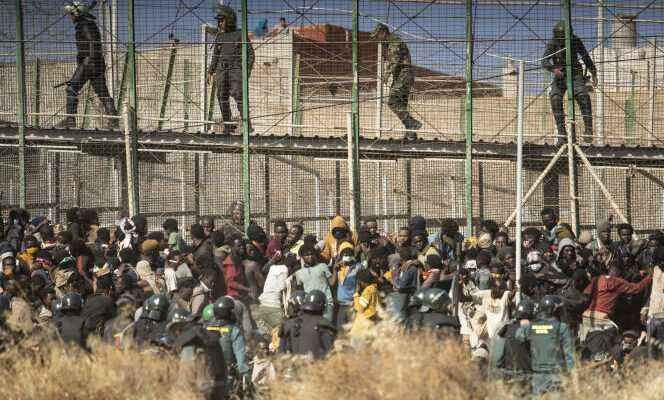To not miss any African news, subscribe to the newsletter of the World Africa from this link. Every Saturday at 6 a.m., find a week of news and debates covered by the editorial staff of the World Africa.
Sara Prestianni is a migration specialist at the NGO EuroMed Rights. She analyzes how migration policies have become the object of blackmail between Spain and Morocco.
More than twenty migrants died on June 24 while trying to enter the Spanish enclave of Melilla. Was this tragedy foreseeable?
Sara Prestianni It is the fruit of months of tension with migrants in Morocco. After the April 2022 agreements between Rabat and Madrid which pledged to strengthen their cooperation on migration, the climate has hardened. Evidenced by the dismantling of camps around the city of Nador [limitrophe de Melilla]the arrests of migrants or the increased difficulties in accessing healthcare.
This drama is also the consequence of the desperation of the migrants who attempt the passage, at all costs. Moroccan forces were ready to do anything to stop them in the name of calming relations with Spain. The border did the rest, with its multiple barriers where hundreds of people crashed. There were more than 37 deaths, according to a non-definitive assessment of NGOs, arrests, and almost 400 people were deported to Nador when they were already in Spanish territory. There have also been attempts to bury the bodies even before they have been identified.
Are there precedents?
In October 2005, six migrants were shot dead in Melilla during several hundred crossing attempts. The route of the enclaves was still little used at the time, but it began to serve as an alternative to passing through the Strait of Gibraltar where the interception system using radars and cameras had just been put in place. . In 2005, the fence in Ceuta and Melilla was no more than three meters high and migrants climbed over it using ladders. Now, the border of Melilla reaches ten meters high.
There are many Sudanese among the victims. How do you analyze this?
It is a new element. Previously, the Sudanese passed through neighboring Libya in order to cross the central Mediterranean towards Italy. But the reinforcement of the capacities of the Libyan authorities in interceptions at sea, thanks to European and in particular Italian support, the level of violence in the detention centers or the number of deaths at sea have surely pushed them to take other routes. On Wednesday June 29, we also learned that the bodies of twenty migrants, a priori chadian, had been found in the Libyan desert, near the borders with Sudan and Chad. The group had gotten lost.
You have 55.2% of this article left to read. The following is for subscribers only.
